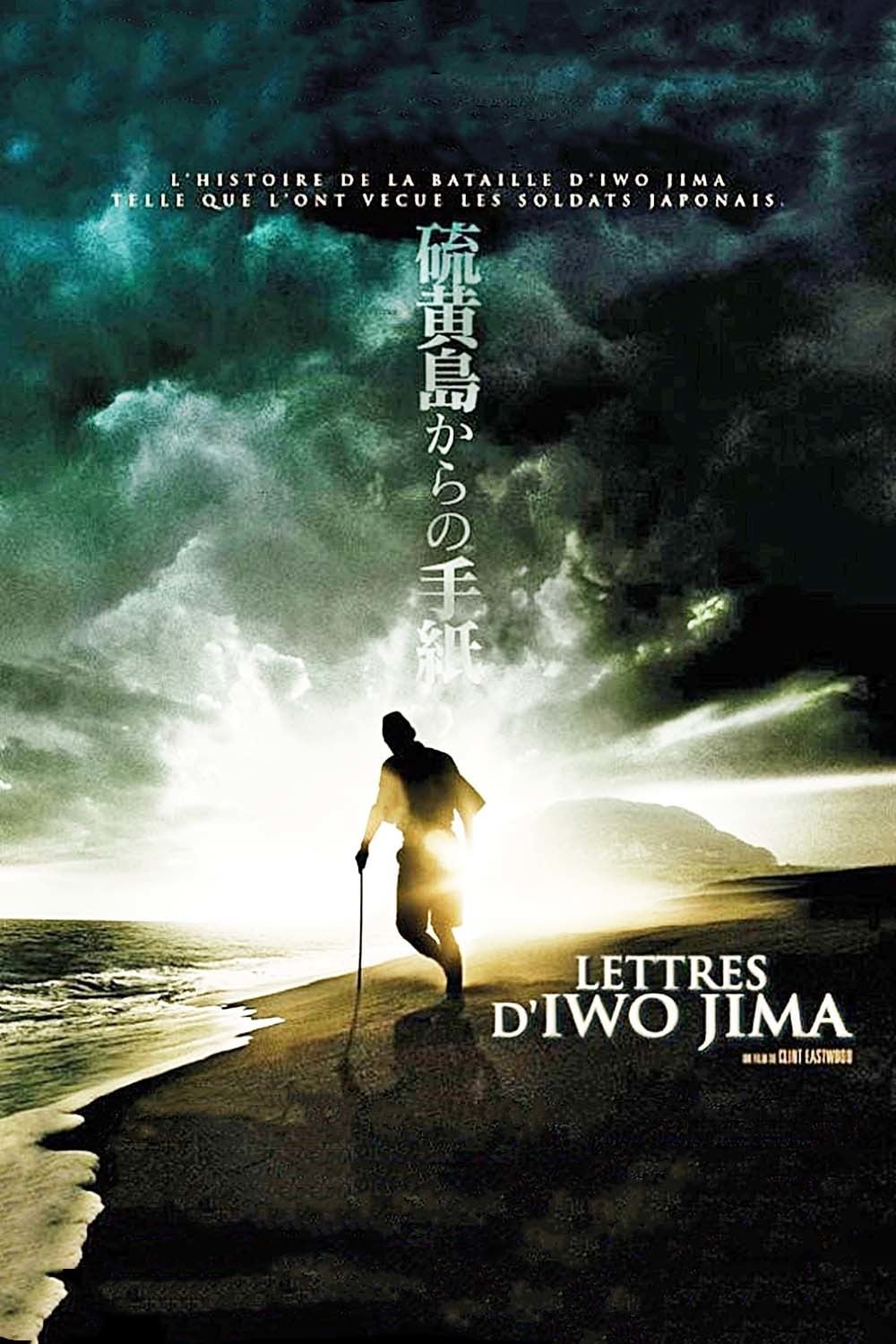Letters From Iwo Jima Downloadeleasysite
“They are on their way. For our homeland. Until the very last man. Our duty is to stop the enemy right here. Do not expect to return home alive.”
Letters from Iwo Jima N/A IMDB: 7.9 The story of the battle of Iwo Jima between the United States and Imperial Japan during World War II, as told from the perspective of the Japanese who fought it. The screenplay for Letters, written by Paul Haggis and Iris Yamashita, was based on two sources: letters left behind by Iwo Jima’s Japanese garrison commander, General Tadamichi Kuribayashi (1890–1945), and Kumiko Kakehashi’s So Sad to Fall in Battle: An Account of War, also based on Gen. Kuribayashi’s letters. Shop Letters from Iwo Jima DVD 2006 at Best Buy. Find low everyday prices and buy online for delivery or in-store pick-up. Price Match Guarantee.
As the counterpart to Flags of Our Fathers, Letters from Iwo Jima gives viewers a glimpse into the Japanese point of view during the battle of Iwo Jima.
In contrast to the beach scenes in Flags of Our Fathers, the Japanese point of view shows how the Japanese fought from their defensive tunnels, as well as how effective the use of flame throwers was against them. The clip above shows how the defensive position of the Japanese made them easy targets for the Americans when they got close enough.
Here we can see how the Japanese forces were strongest in their established defenses, thus making them vulnerable when outside. As the Japanese run back to their cave, the marines are able to shoot down a number of Japanese soldiers.
The dedication of the Japanese forces was what made the pacific war a bloody affair. The Japanese were willing to fight to the death and did so. Rather than become captives of the Americans, a number of Japanese killed themselves in their caves.
This movie is unique because it is told from the opponent’s point of view while being based on accounts of the US forces. The low number of Japanese survivors meant that the American accounts were relied on to tell both sides of the battle.[1.] In addition to his, the battle at Iwo Jima is not well known in Japan today. This movie recovers a forgotten past.[2.] The fact that an American director made this movie makes the portrayal of the abttle all the more important. Both movies show the struggles that this battle put the soldiers through, and by showing the Japanese point of view, there now exists a precise visual representation of the opponent in a humanistic way. Letters from Iwo Jima is important to Japan by remembering the sacrifice of their people and is important to American history by humanizing the Japanese in the battle of Iwo Jima.
[1.] Leo Braudy, “Review of Flags of Our Fathers by Clint Eastwood, Steven Speilberg and Robert Lorenz,” Film Quarterly, (Summer 2007), 18.


[2.] Justin Hart, “Review of Flags of Our Fathers by Clint Eastwood, Steven Speilberg and Robert Lorenz and Letters from Iwo Jima by Clint Eastwood and Robert Lorenz,” Journal of American History, 94, no. 3, (December 2007), 1034.
It's a simple establishing shot: a tilt up from the beach where the Allied forces landed to Mount Suribachi, a rocky knob on the southern tip of the island where the Japanese holed up in a network of tunnels and bunkers, and on top of which the famous, iconic image of the raising of an American flag was taken. That classically heroic-looking photo, and the collateral damage from its exploitation as a propaganda tool to sell War Bonds, was the subject of Eastwood's 2006 'Flags of our Fathers,' the companion piece (or other half) of 'Letters From Iwo Jima,' though it doesn't really matter which one you see first.
Letters.from Iwo Jima
The opening moments of 'Letters' have a cosmic zoom-like effect, taking us from the timeless and abstract (stars/sand) into a specific place and time: 'Iwo Jima 2005,' as a title denotes. It was on this barren little sulfuric spec in the Pacific Ocean, only about five miles from one end to the other, that so many people fought and died 60 years ago.
'Flags of Our Fathers' ended with a similar motion, going from memory-images of surviving Marines frolicking in the surf, to the Stars and Stripes atop Mount Suribachi and the battleships in the harbor, and finally up into the sky (another reason you might think you're looking up rather than down at the start of 'Letters,' which begins with a view in the opposite direction from the close of 'Flags'). The camouflaged artillery that proved so deadly and menacing in 'Flags' are, by the start of 'Letters,' just rusty relics at a war memorial site. Archeologists explore Suribachi's caves and tunnels, still marveling at how the soldiers ever managed to build them.
And then we're on the beach again, in 1945, as Japanese soldiers prepare for the invasion they know is coming by digging trenches in the sand. It looks like a futile, Sisyphean effort. In a letter to his wife (heard in voiceover) one of the diggers, a puppy-faced former baker named Saigo (Kazunari Ninomiya, in a thoroughly winning performance), writes philosophically: 'This is the hole that we will fight and die in.'
Letters From.iwo Jima

They might have died a lot sooner if they'd stuck with this ill-conceived sand strategy. When the new commander, General Tadamichi Kuribayashi (the always-commanding Ken Watanabe), arrives at Iwo Jima, he immediately changes plans, ordering men and artillery to dig in on higher ground. These are the preparations for the massive ambush we see in 'Flags of Our Fathers.'
